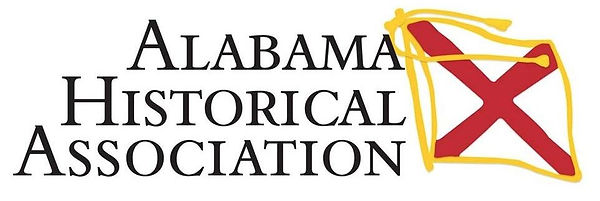
Auburn University
Alabama's Land-Grant University. This title given by Legislature in 1960 followed start of second century of growth in diverse services to state, nation. This act confirmed name "Auburn" used popularly from its founding by Methodists as East Alabama Male College in 1856. Methodists deeded college to State in 1872 to become under the Land Grant Act, Agricultural & Mechanical College of Alabama. In 1899, with growth, name changed to Alabama Polytechnic Institute. "Owing much to the past, Auburn's mission makes its greater debt ever to the future."
[Located behind Samford Hall on Thach Street, Auburn University. 32.60424 N, 85.48372 W]
Auburn University & the Alabama Farmers Federation
On January 31, 1921, farmers gathered on the campus of Alabama Polytechnic Institute (API), now Auburn University, to form the Alabama Farm Bureau, now known as the Alabama Farmers Federation. Former Alabama Extension Service Director Luther Duncan, who later became API president, encouraged farmers to organize as a unified force in public policy and to support agricultural education, research, and outreach. Extension agents promoted Farm Bureau membership throughout Alabama. By 1925, Farm Bureau groups were established in all 67 counties. Farm Bureau played a pivotal role in development of farm programs, cooperative marketing, rural electrification, and strengthening the land-grant university system. In 1946, Alabama Farm Bureau formed what is known today as Alfa Insurance® to provide coverage for rural residents. The organization changed its name in 1987. The Federation has emerged as the preeminent voice for farmers and rural Alabama in advocacy, communication, public policy, leadership development, commodity promotion, agricultural education, and research. In 2021, the Alabama Farmers Federation celebrated its centennial and the 75th anniversary of Alfa Insurance with a renewed commitment to its founding principles.
[Ag Heritage Park Pavilion, S. Donahue Drive, Auburn University]
Founders’ Oak
This post oak started growth in 1850 and was 6 years old when East Alabama Male College was established. It was 33 years old when the Alabama Agricultural Station was established, 91 when the nation entered World War II, and over 100 when this site was made an arboretum. In 1975, Hurricane Eloise wreaked havoc in the arboretum but the Founders’ Oak withstood the storm. It was 150 years old at the start of the twenty-first century and is expected to be here at the start of the next century.
[Davis Arboretum, 32.59626 N, 85.48331 W]
Line 32° 28´ North Latitude
Northern Boundary of: British W. Florida 1764-83, Spanish W. Florida 1783-95, Mississippi Territory 1798-1804, Washington County 1800-12, Clarke County 1812-15. Southern Boundary of: British Illinois 1764-83, United States 1783-95. Line fixed in 1764 by British king across present Alabama-Mississippi. France had ceded area to Britain in 1763.
[32.53123 N, 85.08814 W]
Sigma Alpha Epsilon
The Alpha Mu chapter of Sigma Alpha Epsilon was founded on June 15, 1878 at the Agricultural & Mechanical College of Alabama (now Auburn University). John E.D. Shipp came to Auburn as a student determined to organize a chapter at a time when fraternities were forbidden on campus. Working in secrecy with SAE brothers in Georgia, Shipp had two members of Mercer University’s chapter, William H. Felton and Frank H. Greaves, travel to Auburn to install the chapter behind Old Main in a cornfield where Samford Hall now stands. The first fraternity on Auburn’s campus, Sigma Alpha Epsilon remains a place for “The True Gentleman.”
[W. Magnolia St., Auburn. 32.60649 N, 85.49275 W]
Desegregation at Auburn
The first African American student entered the library to register at Auburn University at this site. Acting on a court order, Auburn president Ralph Brown Draughon accepted the application of Harold Franklin as the first African American student in 1963. Hoping to avoid conflicts as had occurred during the desegregation of other universities across the South, Draughon scheduled the registration for Saturday, Jan. 4, 1964, and closed the campus to the public. University officials and FBI agents met Franklin at the nearby Auburn Methodist Church to escort him to campus. State troopers sent by Governor George Wallace blocked their access, forcing Franklin to proceed alone and unprotected. Some protesters assembled nearby, but no violence occurred and registration was concluded peacefully. A century of institutional segregation effectively ended that day, clearing the path for other African American students to enroll and attend Auburn University.
Erected to commemorate 50 years of desegregation at Auburn University.